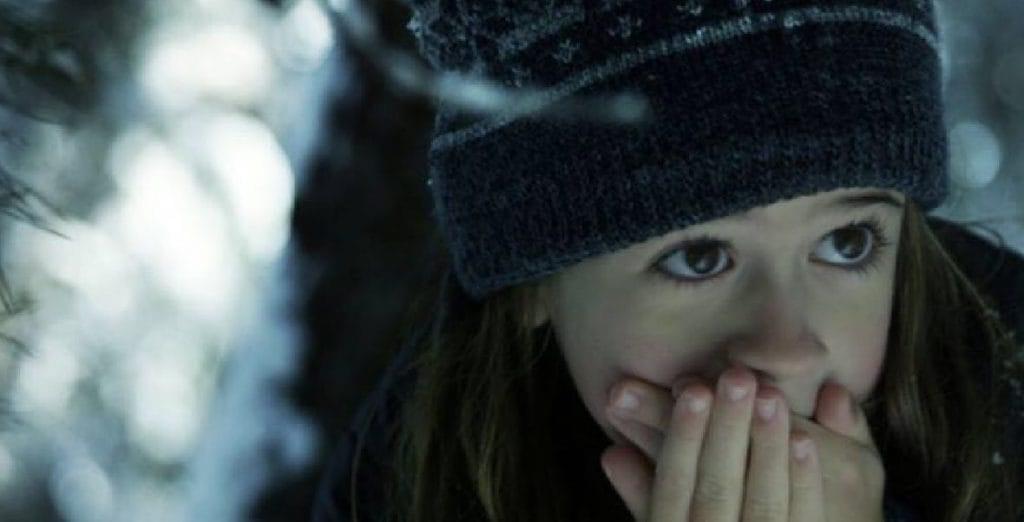
Sean Baker’s sublime “Starlet” tosses us, alone and unloved, into the sweltering sun of LA’s San Fernando Valley. Like seas of angry ants, the city’s masses rush hurriedly across sidewalks, into supermarkets, and through adult film expos. Behind the crowded hustle and bustle, however, there exists a sad sea of anonymous faces. Geriatric widows fester in disheveled ramblers and barely-legal blondes take porn-film pop shots to pay the rent.
Baker, however, is an optimist. With subtle, persuasive grace, “Starlet” suggests that human connection can both rejuvenate the most embittered of spirits, and anchor the most rootless of souls.
We meet Jane (Dree Hemingway, daughter of Muriel and grand-daughter of Ernest). She’s 21-years old, blonde, and blessed with the never-ending legs of a human giraffe. Toting around a pet Chihuahua named Starlet, Jane is almost carelessly friendly, her unguarded curiosity a wholesome contrast to the Valley’s callous vibe. There’s an unfiltered purity about the way Jane nonchalantly offers a ride to a stranger… but we eventually learn that Jane’s innocently cheerful veneer masks both a startling shadow life, and the throbbing ache of abandonment.
Jane isn’t the only lonely woman residing in the Valley. A surly octogenarian named Sadie (85 year-old first-time actress Besedka Johnson) quietly stagnates behind overgrown yard shrubs yard and stacks of household mess. Sadie waters morning glories in her cramped backyard garden, relies on cab rides to the nearby supermarket, and loses at weekly bingo games played from a local church. Like Jane, Sadie also hurts – not so much from loneliness, but from a stinging loss managed through crotchety, protective isolation.
Jane, the eager-to-please puppy, and Sadie, the wary turtle, seemingly inhabit entirely separate orbits. But their planets collide when Jane purchases a second-hand thermos from Sadie’s yard sale (the hoarding senior is under pressure from insurance agents to “de-clutter” her estate). It’s a benign purchase, intended for use as a flower vase to jazz up Jane’s boring apartment (reluctantly shared with two bong-sucking, oxy-popping cretins). Later, however, Jane discovers $10,000 inside the thermos, and is faced with a moral dilemma. Does she return the money to its bitter previous owner, or live large on the loot?
In the manner of an amiable stalker, Jane studies Sadie from a distance. Is the grumpy old woman, who barked “No refunds!” before shooing her away from the sale, in need of the small fortune? Will she even miss the money?
There are other underlying reasons why Jane, a recent transplant from Florida where her uninvolved mother still resides, harbors an interest in this enigmatic senior. Through a series of carefully-manipulated “chance” encounters (for example, sending away Sadie’s taxi from a supermarket curb, then offering the stranded shopper a ride home), Jane comes to know Sadie – and embrace her maternal company. As their relationship blossoms into a sweet, unlikely friendship, Sadie is also forced with an uncomfortable choice. Does she take on this needy young waif as a surrogate daughter, and risk complicating her own guarded cocoon of a life?
“Starlet” is the extraordinary, emotional story of how these two forgotten souls, separated by sixty years of life experience, forge an unlikely human bond. Or perhaps, Baker suggests, their connection is not that unlikely after all. Wannabe actress Jane seeks stardom in all the wrong places, while Sadie, wearing the thick mascara of a once-pampered prima donna, suggests past aspirations of fame. Sadie, despite self-imposed exile, reveals an ongoing yearning to visit Paris. Meanwhile, Jane dreams of a stable home base, grounded by the nurturing love of a parent.
Most astonishingly of all, we discover that neither woman is the least bit naïve in matters of unconventional living. Sadie opens up to Jane about her husband’s renegade career as a professional gambler (“a good one,” she exclaims with a mischievous grin). Meanwhile, during a startling mid-film reveal, we’re shown how Jane makes her living. I won’t spoil the denouement. Suffice to say that our eyes are opened – wide and without censor – to an industry that is quickly replacing fast food restaurants as the number one employer of uneducated, nubile young women. Despite a typically ditzy demeanor, Jane is both street-savvy and shrewdly aware of her sexual power.
“Starlet” is achingly sad, shrewdly funny, and shockingly honest. Baker’s two complicated heroines reflect the unpredictable layers hidden beneath our surface veneers, reminding us that we are defined by neither our age, nor what we do for a living. And with wise, nonjudgmental strokes, he reminds us that friendship is a treasure that can heal life’s wounds with extraordinary, transformative power… if we let it.
